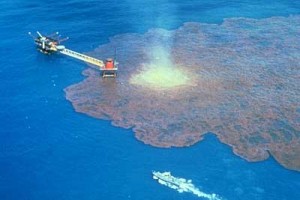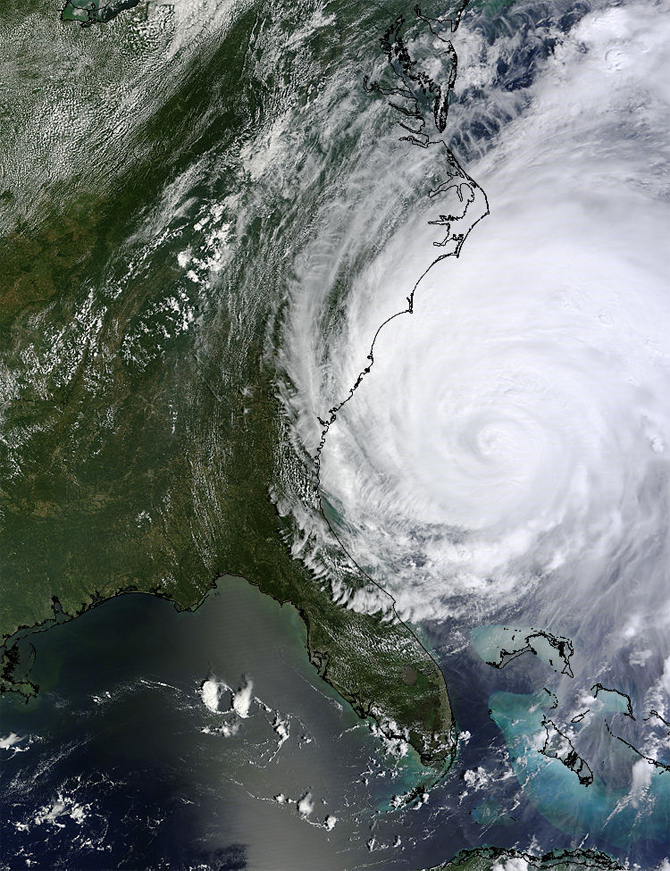Latest Updates on Hurricane Irene
By ROBERT MACKEY
On Friday, The Lede is tracking preparations for the expected landfall of Hurricane Irene, a powerful storm heading for the Northeastern United States.
Auto-refresh is: ONTurn ONTurn OFF
Refresh nowUpdating…FeedTwitter
5:46 P.M. |Even if Storm Weakens, Flooding Could Be a Problem
Jeff Masters, a founder of the Weather Underground Web site who studied storms from the air for four years with the National Oceanic and Atmospheric Administration’s Hurricane Hunters, is tracking Irene’s progress in great detail on his WunderBlog.
In his most recent post, Dr. Masters reports: "Satellite data and measurements from the Hurricane Hunters show that Irene is weakening." He explains that an Air Force flight over the storm this morning "found that Irene’s eyewall had collapsed," this morning. He adds: "The winds measured in Irene near the surface support classifying it as a strong Category 1 hurricane or weak Category 2."
Based on the latest data, Dr. Masters produced a good news/bad news forecast: predicting that the storm could cause dramatic flooding even if it weakens to a Category 1 hurricane as it moves north. He explains:
With its eyewall collapsed and just 18 more hours over water before landfall, Irene does not have time to build a new eyewall and intensify. The storm is too large to weaken quickly, and the best forecast is that Irene will be a strong Category 1 hurricane at landfall in North Carolina on Saturday.
Based on the latest wind analysis from NOAA’s Hurricane Research Division and Irene’s continued weakening trend, I predict that the 80-mile section of North Carolina coast to the right of where Irene makes landfall will receive sustained hurricane-force winds of 75-85 m.p.h. on Saturday at landfall; the 80-mile section of coast to the left will receive 55-75 m.p.h. winds. High wind shear of 30 knots will begin ripping into Irene Sunday morning when it is near Southern New Jersey, and more rapid weakening will occur.
By the time Irene arrives on Long Island Sunday afternoon, it will probably have top sustained winds in the 65-75 m.p.h. range. However, since Irene is such a huge storm — tropical storm force winds extend out up to 290 miles from the center — it has set a massive amount of the ocean’s surface in motion, which will cause a much larger storm surge than the winds would suggest. At 3:30 pm EDT this afternoon, a wind analysis from NOAA’s Hurricane Research Division indicated that the potential storm surge damage from Irene still rated a 5.0 on a scale of 0 to 6. This is equivalent to the storm surge a typical Category 4 hurricane would have.
While this damage potential should steadily decline as Irene moves northwards and weakens, we can still expect a storm surge one full Saffir-Simpson Category higher than Irene’s winds when it impacts the coast. Since tides are at their highest levels of the month this weekend due to the new moon, storm surge flooding will be at a maximum during the high tidal cycles that will occur at 8 p.m. Saturday night and 8 a.m. Sunday morning. Wherever Irene happens to be at those times, the storm surge damage potential will be maximized. I continue to give a 20 percent chance that a 3-4 foot storm surge high enough to over-top the Manhattan flood walls and swamp the New York City subway system will occur on Sunday. The latest 11 a.m. probabilistic storm surge map from the National Hurricane Center shows a 20-30 percent chance of a storm surge in excess of 3 feet in New York Harbor. Keep in mind that these maps are calculated for normal tide level, and this weekend’s high tides will be nearly 1 foot above normal.
5:18 P.M. |Looking at Simulations of the Possible Storm Surge
MITA simulation of the storm surge from Hurricane Irene (using the Slosh model) shows severe flooding in New Haven and New London, Conn., (the scale is in feet) and parts of New Jersey, with extra sea height of around four feet (on top of the tide) in New York City.
In a new post on his Dot Earth blog, "New York Surge From Irene Looks Bad, But Not Off Charts," my colleague Andrew Revkin reports:
Researchers at the Massachusetts Institute of Technology focused on coastal impacts from hurricanes have run fresh simulations of the possible storm surge as Hurricane Irene hits the New York metropolitan region. Simulations using two surge models (known by their acronyms, SLOSH and ADCIRC) found 1.22 and 1.05 meters of surge (4 and 3.44 feet) of surge at the Battery, at the southern tip of Manhattan.
This would pose serious risks to low installations and the subways but is nowhere near a worst case (think 13 feet, as in 1821)….
The surge model also does not include waves* and the extra tide expected because it’s a new moon. They’re in the process of running a simulation with that factor included.
In an update to the post, he adds:
The Storm Surge Research Group at the State University of New York, Stony Brook, has a great online tool that provides an advance estimate of storm surge at important spots around New York City and Long Island Sound. Click on a buoy to see the current state of sea level and what’s anticipated over the next 24 hours (the models are run twice a day). The group emphasizes that this is a work in progress and should not be used to make evacuation decisions or the like.
via Latest Updates on Hurricane Irene – NYTimes.com.







